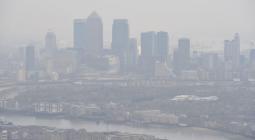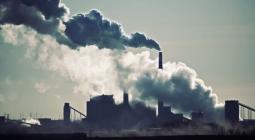Polluted U.S. Neighborhoods Haven't Improved in 40 Years

If you lived in a community suffering from bad air quality in 1981, chances are your neighborhood hasn't improved much. That's the takeaway from a new study that found despite years of progress to improve air pollution, wealthy, white Americans are breathing much cleaner air than low-income communities of color, The Guardian reported.
"Disadvantaged communities remain persistently exposed to higher levels of air pollution," said Jonathan Colmer, an economist at the University of Virginia and co-author of the new study published in the journal Science, Reuters reported. "This was true in 1980, it was true in 1990, 2000, 2010, and so on."
The study examined fine particulate matter, known as PM2.5, across the United States dating back to 1981. It found that the concentration of pollution from fine particulate matter fell about 70 percent between 1981 and 2016. Experts attribute the progress to stricter emissions regulations, more fuel-efficient vehicles and a decrease in coal-fired plants, Reuters reported.
But even with four decades of air quality improvement, low-income communities of color still do not have equal access to clean air. That's particularly worrying because of the connection between pollution and COVID-19. Recently, a group of Harvard data scientists found that a person living in areas with high-particulate pollution is 15 percent more likely to die from COVID-19 than someone living in an area with only slightly less air pollution, Well and Good reported.
"The persistence of these relative disparities were striking," Colmer told NPR. "Federal and state guidelines aim for all people and places to enjoy the same degree of protection from environmental hazards. We're falling short in terms of addressing relative disparities."
The study was released four months after the Trump administration rejected an Environmental Protection Agency recommendation to tighten air quality regulations, Reuters reported. Though the administration countered that current standards were adequate, the evidence suggests otherwise.
"If a child was born in Los Angeles county today, they would be exposed to the same amount of pollution the average child was exposed to in the early 1990s," Colmer said in The Guardian.
"This paper nicely shines a spotlight on the fact that these disparities continue to be large and that we ought to do something about them," said Joshua Apte, an environmental scientist at the University of California, Berkeley not involved in the study, Reuters reported.
To address the disparities, researchers note that housing discrimination is one of the main culprits, as low-income communities are often located near sources of pollution, according to NPR.
But housing discrimination isn't the only issue.
"Only when we figure out what the causes of the disparities are can we then think about, 'Okay, what are the appropriate policies we can use to mitigate these disparities?'" Lala Ma, an environmental economist at the University of Kentucky told NPR.
- 6.5 Million People Die Each Year From Air Pollution, IEA Says ... ›
- Half of U.S. Air Pollution Deaths Linked to Out-of-State Emissions ... ›
- U.S. Air Pollution Is Getting Worse Under Trump, New Study Finds ... ›
- Climate Change and Public Health - Health Effects - Air Pollution ... ›
- Air pollution, facts and information ›
Jul. 31, 2020




